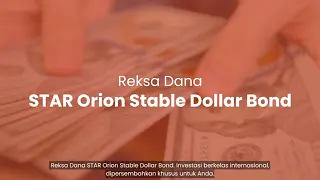
Facing the Recovery Period, This is STAR AM's Investment Strategy
Indonesia is getting closer to the brink of recession, following a number of countries that have experienced it, such as the United States, Germany, South Korea, Spain and Singapore. Indonesia's economic growth in the second quarter of 2020 was in the negative zone, namely -5.32% yoy (Year on Year), lower than the predictions of Bloomberg (-4.7% yoy) and the government (-3.8% yoy). This achievement was the lowest since the first quarter of 1999, which was minus 6.13%. If this minus performance continues into the next quarter, then the national economy is very likely to enter the brink of recession. If the economic rate in the second and third quarters of this year consistently contracts, then technically Indonesia has entered a period of recession.
Throughout this year, there are business sectors that have been affected by the pandemic, such as the transportation and warehousing industries which fell by 30.8% yoy even though the government has provided stimulus to keep the decline under control. Several business sectors such as agribusiness and telecommunications have proven able to survive the impact of the recession. With the increase in COVID-19 cases in Indonesia, the government must face the pandemic and at the same time make efforts to increase economic growth again.

Currently the Indonesian government is trying to increase capacity testing to track the presence of the virus in the community. As the number of tests increases, new positive cases continue to emerge. So what is the current trend in handling COVID-19 in Indonesia?
Trends in Handling COVID-19 in Indonesia:
- The recovery rate increased by 62.6%, approaching the global recovery rate of 63.8%.
- The death rate for COVID-19 patients is still higher (4.7%) than the global death rate (3.8%).
- The provinces with the most COVID-19 cases, East Java and South Sulawesi, show a stable trend.
- Increase in COVID-19 cases in Jakarta in office areas including the SCBD area.

On the other hand, the current contraction in state spending gives the government room to accelerate GDP growth in the 3rd and 4th quarters with an increase in the spending budget. It is hoped that state spending will restore people's purchasing power and restore confidence in the business world and banking sector.
According to Purchasing Managers Index (PMI) data, early indicators of an increase in manufacturing activity have been seen. Manufacturing PMI data from IHS Markit was at 46.9 in July compared to 39.1 in June and 28.6 in May 2020 even though it was still in a contractionary position (below 50). The Central Statistics Agency (BPS) also announced that there was an increase in activity in the air transportation sector in June. Apart from that, there was a decrease in the number of cancellations at Soekarno-Hatta airport from 81.8% in the June 30 period to 68.2% in the July 31 period.
So how will STAR AM be able to face the recovery period?
Currently foreign investors have carried out a net selling action of 103 billion, two days after the announcement of Indonesia's Gross Domestic Product (GDP) by President Jokowi. Even so, the Composite Stock Price Index (IHSG) remained stable, even strengthening because it was supported by increasing transactions by retail investors with a larger average transaction than institutional investors since June. This is supported by 510 companies that have issued 1H20 financial reports. Of the 510 companies, 55.9% of the companies still made a profit. For this reason, during this recovery period, STAR AM remains at the JCI level and selects shares with market cap besar seperti ASII, BBNI, BBRI, CPIN, PGAS, UNVR yang memiliki ketahanan akan resesi dan ditopang oleh aspek fundamental yang kuat.


Author: Agus Pramono, CFA











